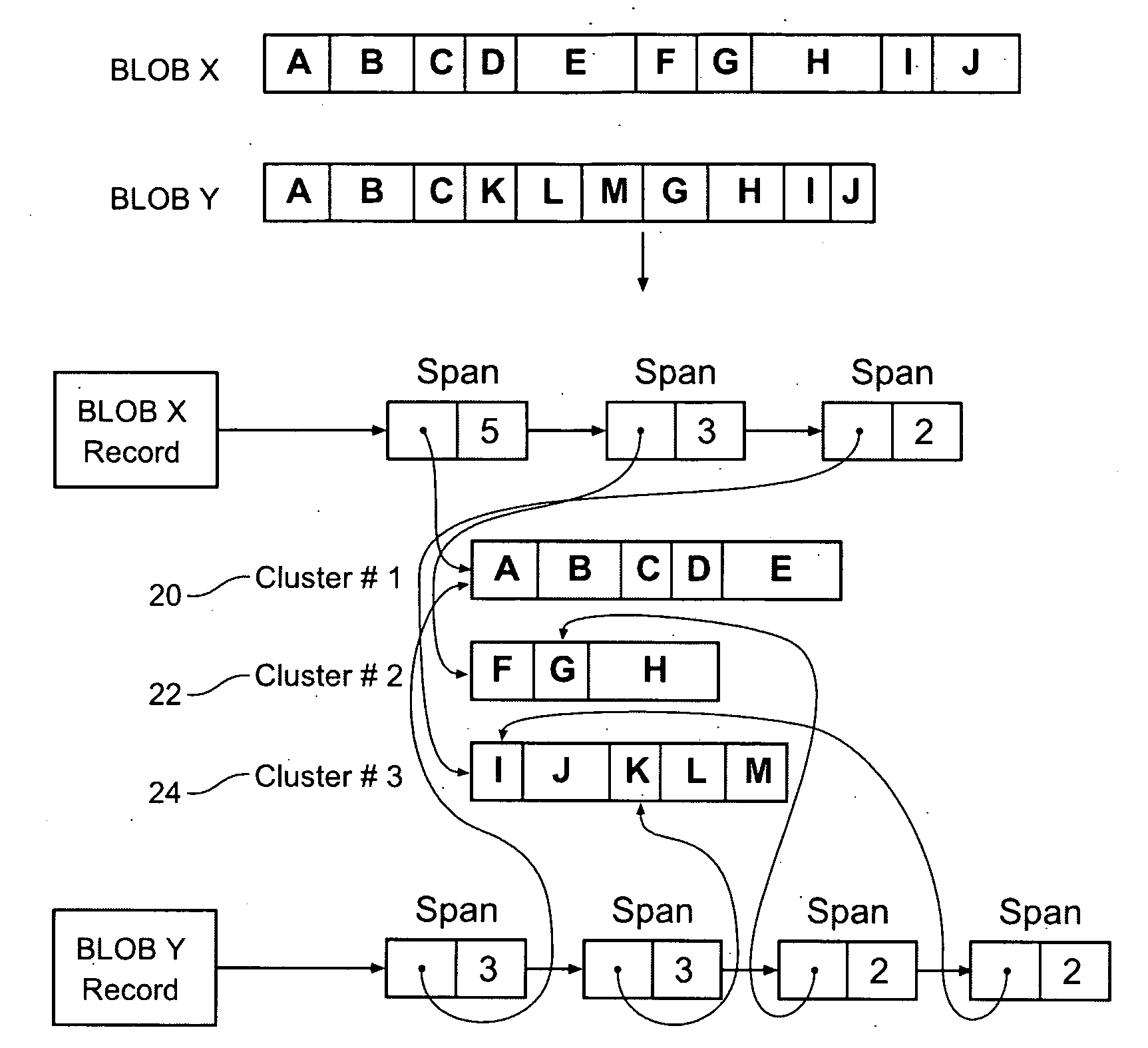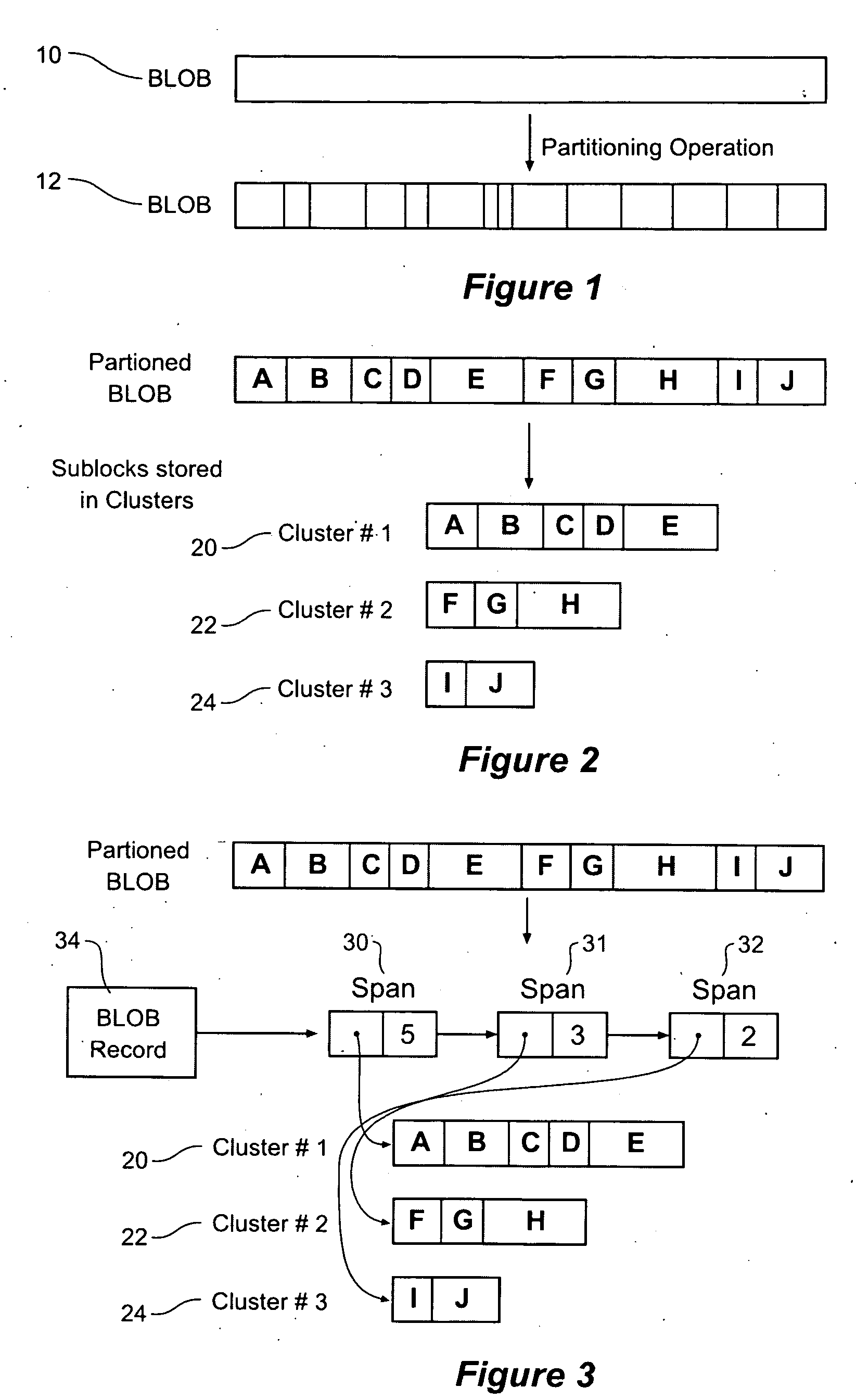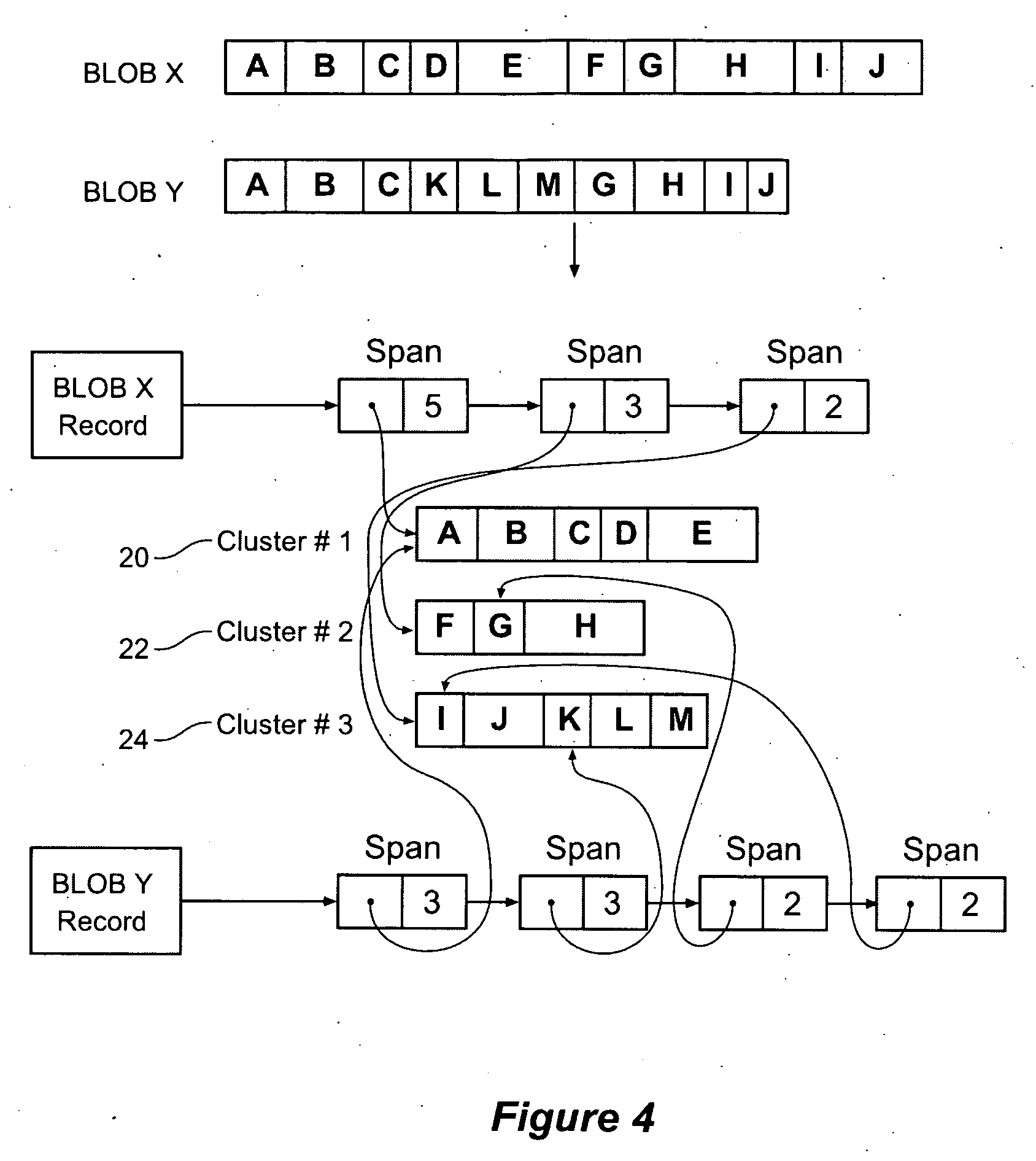Method and apparatus for storing data with reduced redundancy using data clusters
- Summary
- Abstract
- Description
- Claims
- Application Information
AI Technical Summary
Benefits of technology
Problems solved by technology
Method used
Image
Examples
Embodiment Construction
[0108] Specific embodiments of the invention will now be described in some further detail with reference to and as illustrated in the accompanying figures. These embodiments are illustrative, and are not meant to be restrictive of the scope of the invention. Suggestions and descriptions of other embodiments may be included within the scope of the invention but they may not be illustrated in the accompanying figures or alternatively features of the invention may be shown in the figures but not described in the specification.
[0109]FIG. 5 provides an overview of elements of a typical embodiment of the invention. This embodiment contains BLOB records 51, 53, span lists 58, clusters 52, 54, 56 and a subblock index 50. FIG. 38 shows how these elements might be deployed on typical computer hardware. All the data structures reside on disk 380. The index 381 is also held in memory along with some caches that store working copies of some BLOB 382 records and clusters 383.
I. An Overview Of ...
PUM
 Login to View More
Login to View More Abstract
Description
Claims
Application Information
 Login to View More
Login to View More - R&D
- Intellectual Property
- Life Sciences
- Materials
- Tech Scout
- Unparalleled Data Quality
- Higher Quality Content
- 60% Fewer Hallucinations
Browse by: Latest US Patents, China's latest patents, Technical Efficacy Thesaurus, Application Domain, Technology Topic, Popular Technical Reports.
© 2025 PatSnap. All rights reserved.Legal|Privacy policy|Modern Slavery Act Transparency Statement|Sitemap|About US| Contact US: help@patsnap.com



